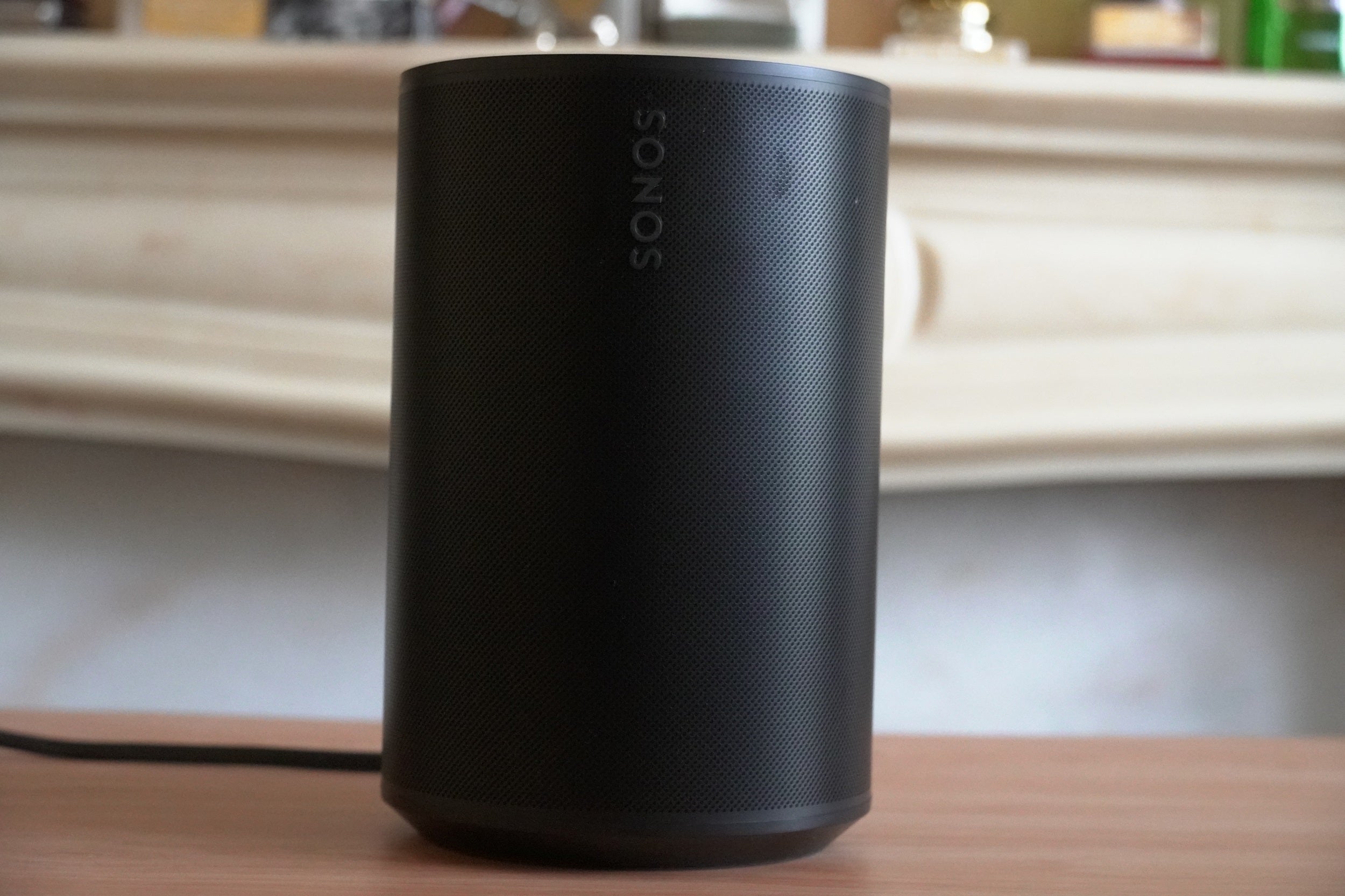Sonos Era 300 Review
Sonos' wireless speaker reaches the Atmos-sphere


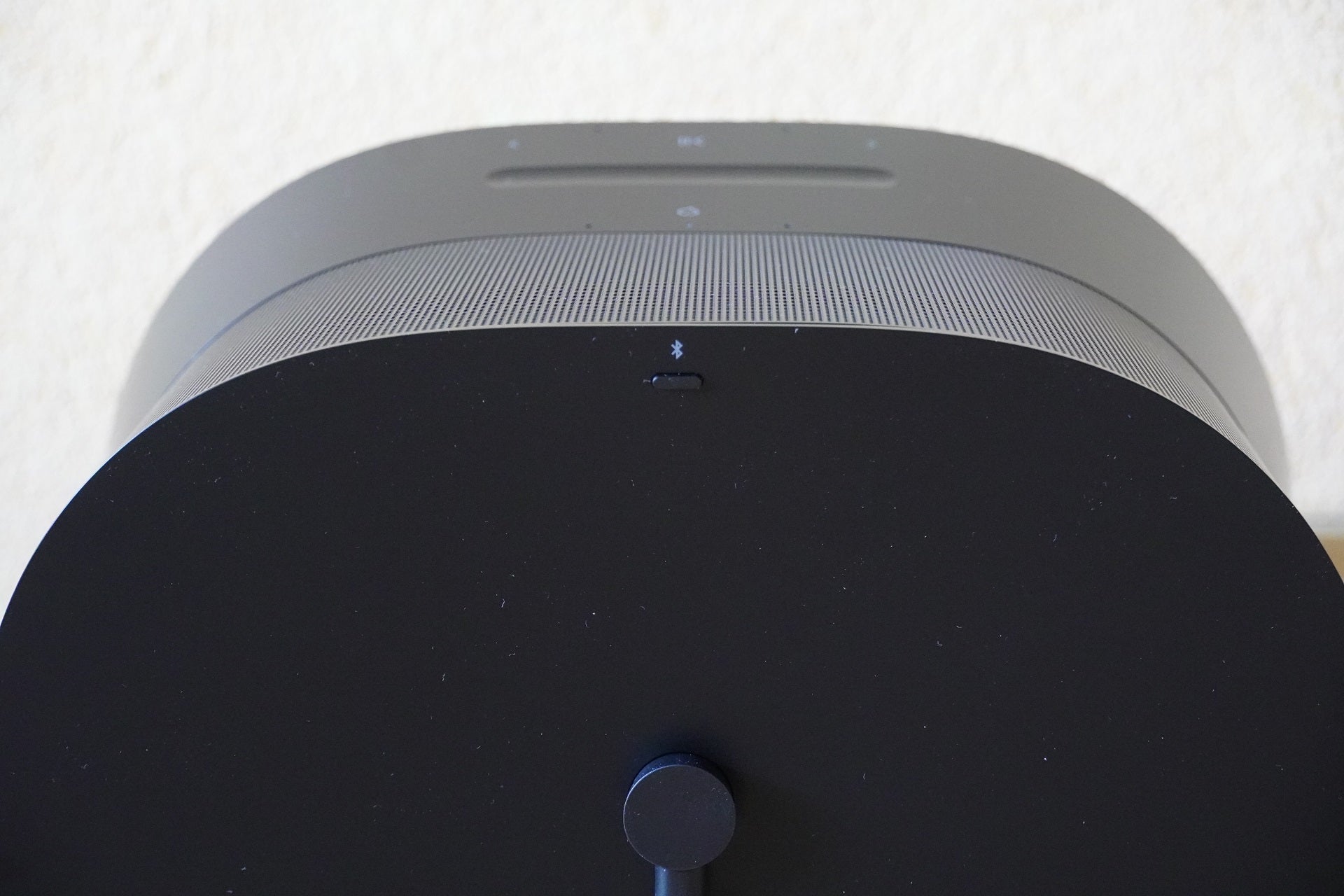
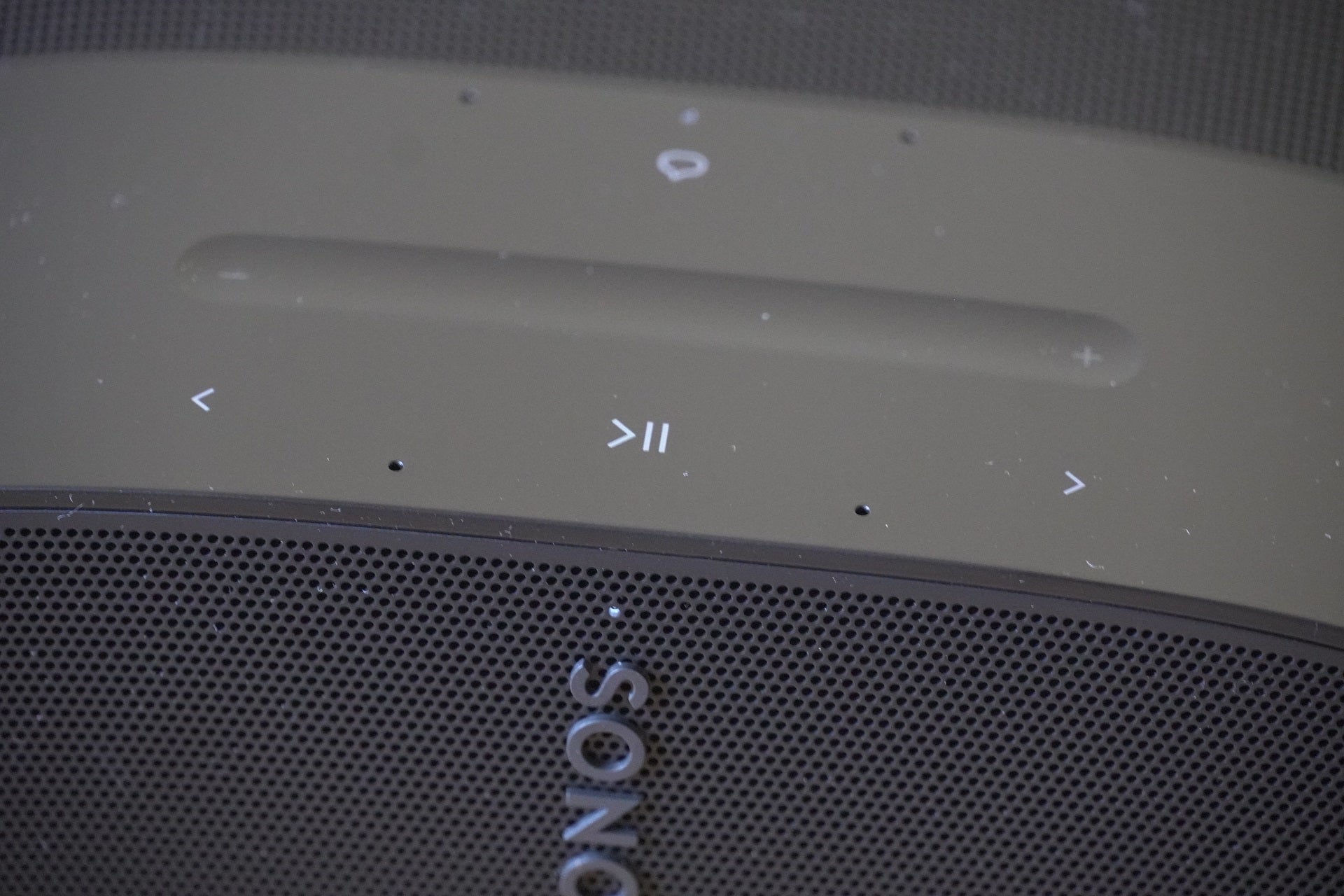
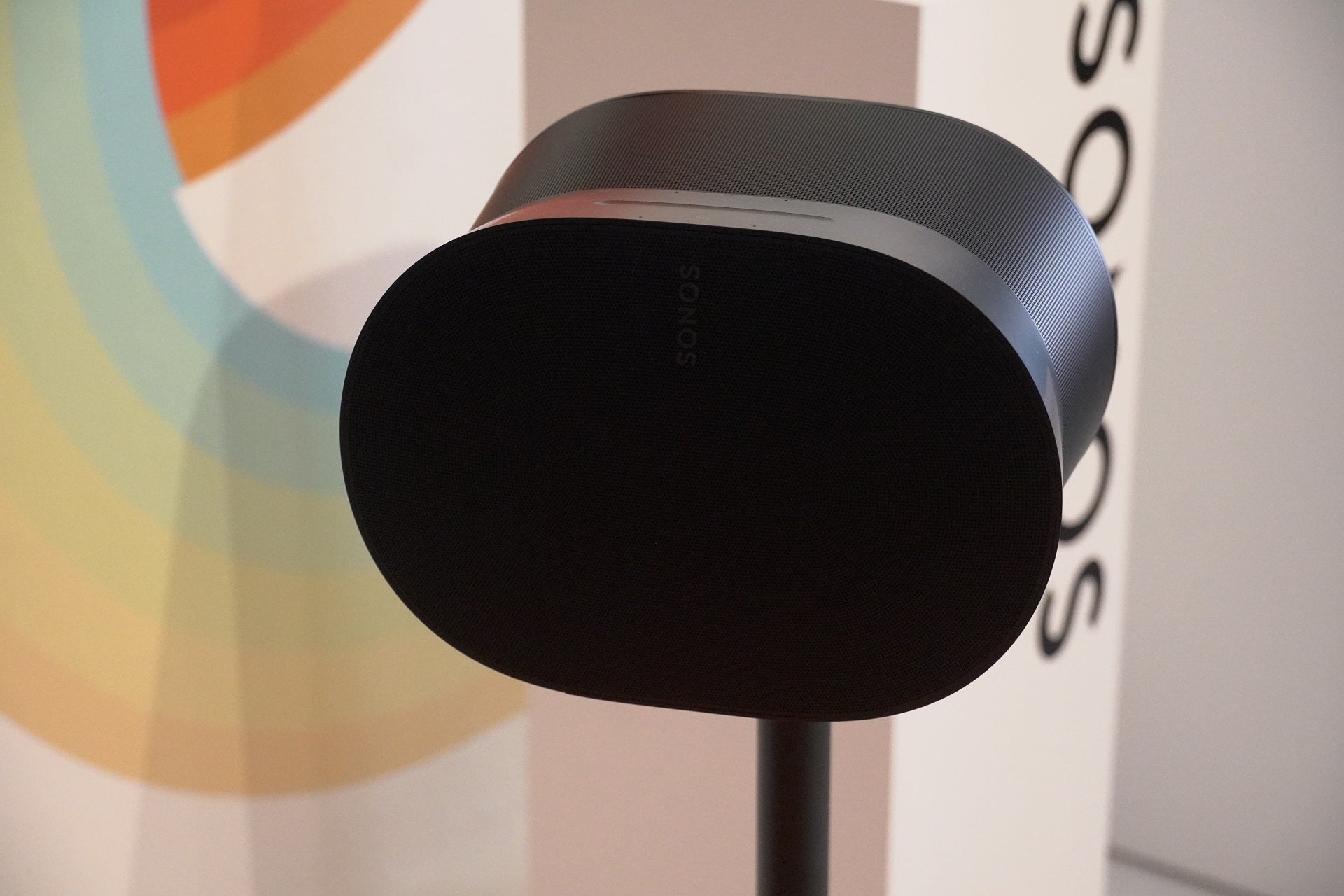

Verdict
A wireless speaker that delivers a fine Dolby Atmos presentation, the Sonos Era 300 delivers a crisp, clear, and balanced sound. This is one of the more exciting and interesting efforts in the wireless speaker market.
Pros
- Expansive Dolby Atmos presentation
- Clear, detailed, and balanced audio
- Quick Tune Trueplay
- Noteworthy looks
Cons
- Doesn’t support Atmos playback from Tidal
- Some will find it too expensive
- Adapters are optional extras
Key Features
- Dolby AudioSupports Atmos 3D sound
- Set-upCan be used independently or within home cinema set-up
Introduction
There have been a few wireless Dolby Atmos speakers to hit the market but none might be able to do the immersive audio format justice in the way the Era 300 can.
This is a Dolby Atmos speaker with upfiring speakers that can function on its own or within a Sonos home cinema system. And though the likes of the Echo Studio and HomePod 2, you’d be a fool to doubt Sonos’ expertise in the realm of the wireless speaker market
The Era 300 has undoubted promise. Can it fulfil its potential? Read on to find out.
Availability
The Sonos Era 300 has an RRP of $449 / £449 / €499 / AUD$749.
That’s £100 less than the Sonos Five, though that speaker currently sells at the same price as the Era 300 in several online stores.
Design
- Interesting design
- Can be disassembled for self-repair
- Not as big as you might think
Adhering to Sonos’ ‘Industrial’ appearance, the Era 300 is one of Sonos’ more striking speakers. It has a concave, hourglass shape that’s only suited to being positioned on its belly. On its underside are feet to keep it level and stable on whichever surface it’s placed on – tip the speaker pointing vertically and it’ll stop playing audio altogether.
At 4.46kg it’s heavy for a wireless speaker but it’s not as big as you might expect – its proportions are smaller than the Sonos Five and it weighs less too. Colour options include matte white and black finishes.

Some may find the design odd, but I like it. The front of the speaker looks like a flower blooming out, and inside that front section is a waveguide inside to distribute the sound out from the speaker. Around its rear are a series of woofers and tweeters to help produce the immersive Atmos audio.
At the bottom rear of the speaker is a toggle switch to completely deactivate the speaker’s built-in microphones; or you can use the touch button behind the volume slider to disable any hands-free voice control.
Buttons are along the front section with playback, track skipping and a slider for volume. Like the Era 100, an LED indicator is positioned at the top of the speaker’s front-facing grille to show its status, and if you want it can be deactivated within the Sonos app.

There’s a USB-C port to connect products via aux, Lightning adapters or an Ethernet adapter to connect to a router for a hardwired connection. Like its smaller sibling, no adapters are included in the box which is disappointing. If similarly priced wireless speaker such as the Bluesound Pulse M can spare an optical adapter, why can’t Sonos.
This new era has resulted in a new approach from Sonos in terms of its sustainability. If it gets damaged the new Era speakers can be serviced by the customer themselves as it’s easier to disassemble.
Features
- Dolby Atmos from Amazon and Apple Music
- Supports stereo pairing
- Adds Bluetooth
The addition of Bluetooth 5.0 along with AirPlay 2 and Spotify Connect casting over Wi-Fi has helped make the new Era speakers more accessible. Then there’s Dolby Atmos sound, the immersive object-based audio format that produces a larger sound than a stereo set-up can muster.
While Amazon Music, Apple Music, and Tidal support Atmos audio, you can only pipe spatial audio from the first two here. I’d still say that searching for Atmos in the app could be better. I’ve had to look for it by typing ‘Dolby Atmos’ in the search bar and it while it comes up with lots of results, the impression is that there are more results left unfound.
You can’t play Dolby Atmos audio over Bluetooth or AirPlay 2, so the best way to do so is through the Sonos app.

The Sonos control app is one of the best. The app provides the ability to customize settings, initiate updates, adjust the EQ (treble, bass, and loudness), fiddle with the height settings for the Atmos performance and access music streaming services from the likes of Tidal to Pandora and Deezer.
Tucked away in the Android version of the Sonos app is Quick Tune Trueplay. This doesn’t require the use of an iPhone’s microphone to calibrate its performance for the space it’s in.
All that’s required is a tap and the speaker’s onboard microphones will measure the room’s acoustics and calibrate the speaker. If you want to use the more advanced and (according to Sonos) more accurate version of Trueplay then there is the iOS iPhone version.
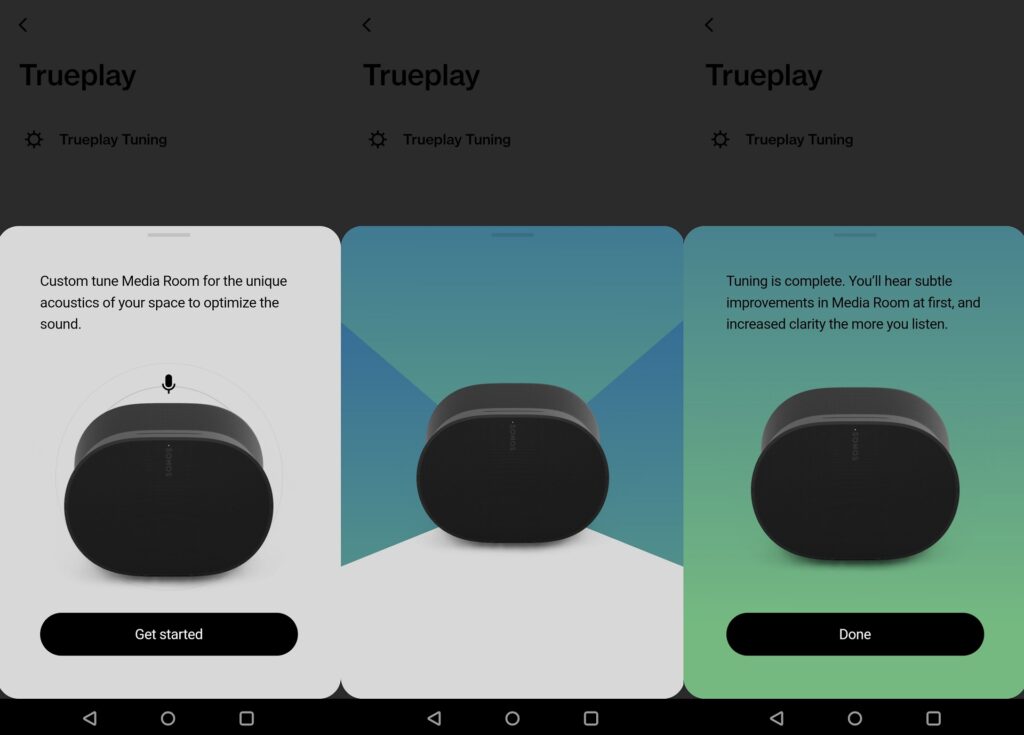
In the app, you can associate the Era 300 with a Sonos Sub and you can connect two of them together to form a stereo pair. And as it features upfiring speakers, there’s genuine Atmos height from the rear surrounds, and the best configuration to use the Era 300 in would be a Sonos Arc and Sub to get a 7.1.4-channel set-up.
Sonos has added support for DTS soundtracks but only the most basic ones with DTS:X missing from the spec list.
For voice operation there’s Amazon Alexa and Sonos Voice Control, the latter for controlling music. Google Assistant isn’t supported because Google has changed the requirements for third-party devices.
Sonos Voice Control needs to be enabled through the app first, and then you can say “Hey Sonos” to play music, or specifically ask for a song, album, radio station or track from a compatible streaming service. It’s not compatible Tidal and only seems to work without issue with Amazon Music. If you choose US English (enabled by default) or French in the settings, the voice is none other than Giancarlo Esposito who played Gus Frings in Breaking Bad.

Sound Quality
- Measured, balanced presentation
- Expansive Atmos sound
- Safety-first approach to treble
In the Era 100 review I mentioned that the speaker was tuned for a weightier, firmer presentation with an emphasis on bass. The Sonos Era 300 is different, having more in common with the discontinued Sonos One SL in delivering a crisper, clearer and defter sound.
Streaming Nick Mulvey’s Nitrous from Qobuz and it’s a less bass-heavy presentation than I found it to be on the Era 100. There’s more insight into the midrange, and tonally it strikes a more natural tone.
It’s hard to compare against other speakers at the Era 300’s price simply as there aren’t many that do what it can do, but perhaps a more direct comparison is the Bluesound Pulse M. That speaker strikes a richer tone with bass and midrange, with more brightness in the upper regions of the frequency range. Of the two, the Pulse M has a more ‘hi-fi’ sound.

The Era 300’s approach to describing treble is furnished with crispness and detail, bringing out the piano in Immanuel Wilkin’s Grace and Mercy. Overall, the balance is more even across the frequency range. Bass is big with a track such as Mikhala Jené’s Black Love, varied and with plenty of depth to sink into, giving genres such as Rap, Hip Hop and R&B more impact.
Trueplay tuning refines the bass to give it more weight but not at the expense of midrange clarity, and I find the Era 300 to be a good listen even at lower volumes. La Queen’s pop-infused Ser Quien Sos’ upbeat tempo and energy still plays well when the volume is reduced, but there is more dynamism and impact to be had raising the volume up.
It’s capable of stereo action with sweeping guitar sounds in Jon Bon Jovi’s Without Love, though with stereo music, audio is played within the margins of the cabinet. With Dolby Atmos content the Era 300 performs its best trick.

Your taste for Atmos may differ given the varying level of approaches to it. Some go for separation, other tracks are happy to sound bigger with more depth, and others have some neat width and spatial effects. I feel with Atmos music has a looser sense of definition, I can place where the sound is within the soundstage, but it feels divorced from the speaker, escaping its confines and in all cases sounding bigger.
With Blondie’s Call Me the most obvious Atmos effect is the guitar slung out wide and roped back in the track’s opening moments. With Gregory Porter’s Mona Lisa, the soundstage is comfortably bigger than the stereo mix: Porter’s voice sounds larger, and I can hear more of the acoustics of the space he’s singing in that’s not present in the stereo mix. There’s more dynamism to the swells of the orchestras, along with more energy too.
With Marvin Gaye’s What’s Going On the track sounds more expansive, as if it’s been opened up. Definition of the instruments are better, the drum in the track’s background is more audible, the crowd noise at the beginning and end of the track takes on a much bigger and clearer presence that in the stereo mix.
Latest deals
Should you buy it?
It does justice to Dolby Atmos audio
The Sonos Era 300 produces an expansive performance with Atmos content with some neat spatial audio tricks. There aren’t many Atmos wireless speakers, but this is a fine example of it.
If you subscribe to Tidal
Tidal Connect is supported but Atmos content from Tidal isn’t yet supported, nor does Sonos Voice Control work with Tidal.
Final Thoughts
The Sonos Era 300 remains a very tempting speaker. It sounds very good, and with Atmos content it generates a big, expansive performance that convincingly escapes the speaker’s dimensions, but it is worth the cost?
For Sonos owners I think it is, and that it can pull duties as a surround speaker will appeal to those looking to build a Sonos-centric home theatre set-up. There’s no doubting the expense but when the Sonos Era 300 is good, it is very good.
How we test
We test every wireless speaker we review thoroughly over an extended period of time. We use industry standard tests to compare features properly. We’ll always tell you what we find. We never, ever, accept money to review a product.
Find out more about how we test in our ethics policy.
Tested with real world use
Tested for several weeks
FAQs
Sonos has described the Era 300 as more sustainable, made with post-consumer recycled (PCR) plastic, packaged in 100% sustainably sourced paper (so you can put it into the recycling once unpacked), and it’s been engineered to reduce power consumption in its sleep mode, so it draws less power when not in use.

